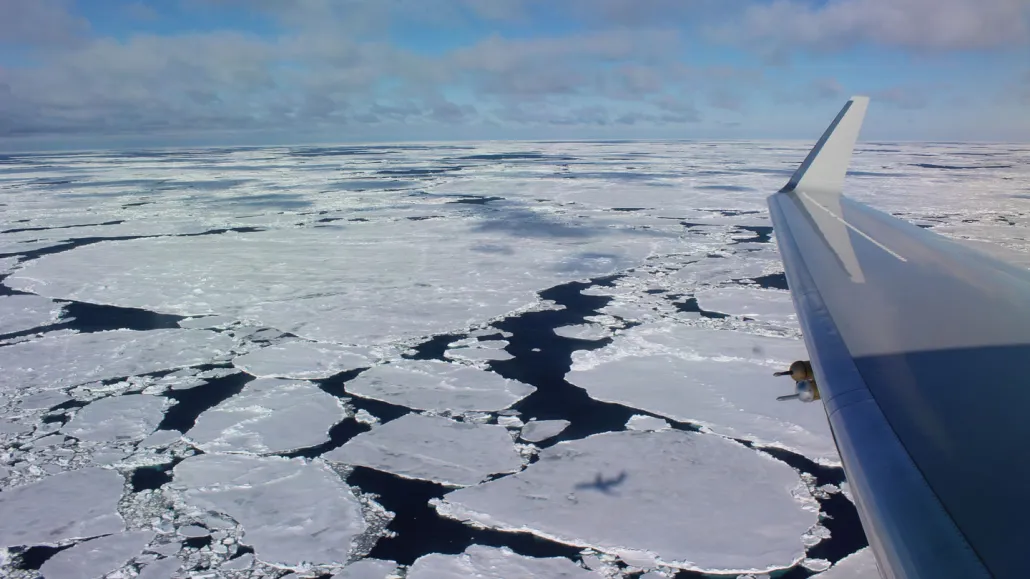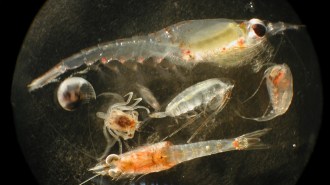
Equipped with sensors to measure carbon dioxide in the atmosphere, this airplane winged across sea ice in the Southern Ocean (shown) during a 2016 field campaign to measure how much gas the waters were emitting.
Rebecca Hornbrook/NCAR
- More than 2 years ago
The Southern Ocean is still busily absorbing large amounts of the carbon dioxide emitted by humans’ fossil fuel burning, a study based on airborne observations of the gas suggests. The new results counter a 2018 report that had found that the ocean surrounding Antarctica might not be taking up as much of the emissions as previously thought, and in some regions may actually be adding CO₂ back to the atmosphere.
It’s not exactly a relief to say that the oceans, which are already becoming more acidic and storing record-breaking amounts of heat due to global warming, might be able to bear a little more of the climate change burden (SN: 4/28/17; SN: 1/13/21). But “in many ways, [the conclusion] was reassuring,” says Matthew Long, an oceanographer at the National Center for Atmospheric Research in Boulder, Colo.
That’s because the Southern Ocean alone has been thought to be responsible for nearly half of the global ocean uptake of humans’ CO₂ emissions each year. That means it plays an outsize role in modulating some of the immediate impacts of those emissions. However, the float-based estimates had suggested that, over the course of a year, the Southern Ocean was actually a net source of carbon dioxide rather than a sink, ultimately emitting about 0.3 billion metric tons of the gas back to the atmosphere each year.
In contrast, the new findings, published in the Dec. 3 Science, suggest that from 2009 through 2018, the Southern Ocean was still a net sink, taking up a total of about 0.55 billion metric tons of carbon dioxide each year.
The 2018 study had used newly deployed deep-diving ocean floats, now numbering almost 200, that are part of a project called Southern Ocean Carbon and Climate Observations and Modeling, or SOCCOM. Calculations based on data collected from 2014 through 2017 by 35 of the floats suggested that parts of the ocean were actually releasing a great deal of carbon dioxide back into the atmosphere during winter (SN: 6/2/19). That sparked concerns that the Southern Ocean’s role in buffering the impacts of climate change on Earth might not be so robust as once thought.
Long says he and other researchers were somewhat skeptical about that takeaway, however. The floats measure temperature, salinity and pH in the water down to about 2,000 meters, and scientists use those data to calculate the carbon dioxide concentration in the water. But those calculations rest on several assumptions about the ocean water properties, as actual data are still very scarce. That may be skewing the data a bit, leading to calculations of higher carbon dioxide emitted from the water than is actually occurring, Long suggests.
Another way to measure how much carbon dioxide is moving between air and sea is by taking airborne measurements. In the new study, the team amassed previously collected carbon dioxide data over large swaths of the Southern Ocean during three separate series of aircraft flights — one series lasting from 2009 to 2011, one in the winter of 2016 and a third in several periods from 2016 to 2018 (SN: 9/8/11). Then, the researchers used those data to create simulations of how much carbon dioxide could possibly be moving between ocean and atmosphere each year.
The float-based and aircraft-based studies estimate different overall amounts of carbon dioxide moving out of the ocean, but both identified a seasonal pattern of less carbon dioxide absorbed by the ocean during winter. That indicates that both types of data are picking up a real trend, says Ken Johnson, an ocean chemist at the Monterey Bay Aquarium Research Institute in Moss Landing, Calif., who was not involved in the research. “We all go up and down together.”
It’s not yet clear whether the SOCCOM data were off. But to better understand what sorts of biases might affect the pH calculations, researchers must compare direct measurements of carbon dioxide in the water taken from ships with pH-based estimates at the same location. Such studies are under way right now off the coast of California, Johnson says.
The big takeaway, Johnson says, is that both datasets — as well as direct shipboard measurements in the Southern Ocean, which are few and far between — are going to be essential for understanding what role these waters play in the planet’s carbon cycle. While the airborne studies can help constrain the big picture of carbon dioxide emissions data from the Southern Ocean, the floats are much more widely distributed, and so are able to identify local and regional variability in carbon dioxide, which the atmospheric data can’t do.
“The Southern Ocean is the flywheel of the climate system,” the part of an engine’s machinery that keeps things chugging smoothly along, Johnson says. “If we don’t get our understanding of the Southern Ocean right, we don’t have much hope for understanding the rest of the world.”




